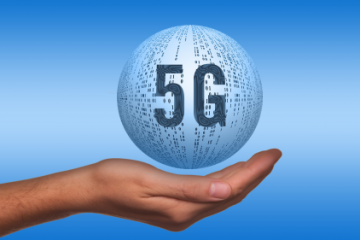It’s up there right now — flying about 340 miles over the Earth and circling us every 97 minutes. It’s a telescope — in the sky. Just think about that for a bit.
It’s called the Hubble Space Telescope. The telescope itself is not really much to look at. If you could see it right now you might think it’s just a big shiny, silver bucket with two gangly solar arms and a couple of dish antennae. It’s about the size of a school bus and weighs about as much as two elephants.
But that silver bucket is pure gold for astronomers. It’s made such a big impact that NASA, the space agency with a fleet of space probes out there taking amazing pictures, calls Hubble the “most significant advance in astronomy since Galileo’s telescope.”
Not bad for a 25 year-old floating bucket.
Hubble didn’t start out winning high marks. It was launched on April 24, 1990, aboard the space shuttle Discovery from Kennedy Space Center, Florida. The next day it was released into space, but scientists soon realized they had a big problem. The telescope’s primary mirror had a flaw: its outer edge was ground too flat by a depth of 2.2 microns — that’s about one-50th the thickness of a human hair.
The images that were expected to dazzle the world were fuzzy.
Hubble became the butt of late-night talk show jokes.
But in December of 1993 shuttle Endeavour astronauts repaired the telescope.
The late-night jokes stopped. And to quote NASA, “our view of the universe and our place within it has never been the same.”
So why is Hubble so special? Because it’s on what NASA calls “the ultimate mountaintop.” Sitting high above the distortion of Earth’s atmosphere, far away from our light-polluted cities and hovering far away from clouds and storms — Hubble has “an unobstructed view of the universe.”
Scientists have used that vantage point to make ground-breaking observations about planets, stars, galaxies and to reveal parts of our universe we didn’t know existed. The telescope has made more than 1 million observations and astronomers have used Hubble data in more than 12,700 scientific papers, “making it one of the most productive scientific instruments ever built,” according to NASA.
Zoltan Levay works in the Office of Public Outreach at the Space Telescope Science Institute at Johns Hopkins University in Baltimore, Maryland.
“All the (Hubble) observations are planned here,” Levay told CNN. “We get all of the science data from the telescope and provide that data to the astronomers around the world.”
Levay oversees the production of the images that are used to illustrate and to publicize the work done by scientists using Hubble. So when someone using Hubble makes a big discovery, Levay’s team helps find the right image to illustrate the results. “We take the same data the astronomers use and we produce the pictures.”
If you’re a photographer or an astronomer — or both — you may be a bit jealous right now.
“It’s been rewarding and a challenge and a roller coaster,” Levay said.
Levay contributed an interview for a new book marking the 25th anniversary of Hubble’s launch: “Expanding Universe. Photographs from the Hubble Space Telescope.”
He says the hardest part of his job is selecting the best photos from the thousands created by Hubble. “It’s a challenge to pick out what one would consider the best,” he said.
Here’s how Hubble creates its amazing photographs: Hubble uses mirrors to gather lots of light from far out into space and then focuses that light on the telescope’s cameras and other instruments. These cameras aren’t like the digital ones in our smartphones that we use to take selfies or even like the old cameras that used photographic film.
Instead, Hubble captures light in many different wavelengths using these cameras and instruments:
• Wide Field Camera 3 (WFC3) sees three different kinds of light: near-ultraviolet, visible and near-infrared.
• Cosmic Origins Spectrograph (COS) sees exclusively in ultraviolet light.
• Advanced Camera for Surveys (ACS) sees visible light.
• Space Telescope Imaging Spectrograph (STIS) is a spectrograph that sees ultraviolet, visible and near-infrared light.
• Near Infrared Camera and Multi-Object Spectrometer (NICMOS) is Hubble’s heat sensor. It’s sensitive to infrared light and lets scientists look for objects hidden by interstellar dust.
• Fine Guidance Sensors (FGS) are used to keep Hubble pointed in the right direction.
Eventually, Hubble will stop working. NASA had hoped to use a space shuttle to bring it home for a museum exhibit, but the telescope outlived the shuttle program. Now, it appears NASA will have to come up with a plan to help its superstar telescope fall back to Earth and plunge into the sea.
Hubble fans hope that date is far into the future, but NASA already has plans to launch a new space-based instrument, the James Webb Space Telescope, in 2018.
http://www.cnn.com/2015/04/19/photos/cnnphotos-hubble-space-telescope-25th-anniversary/




Comments